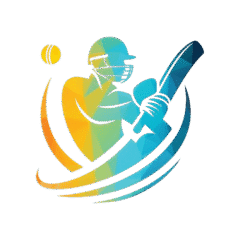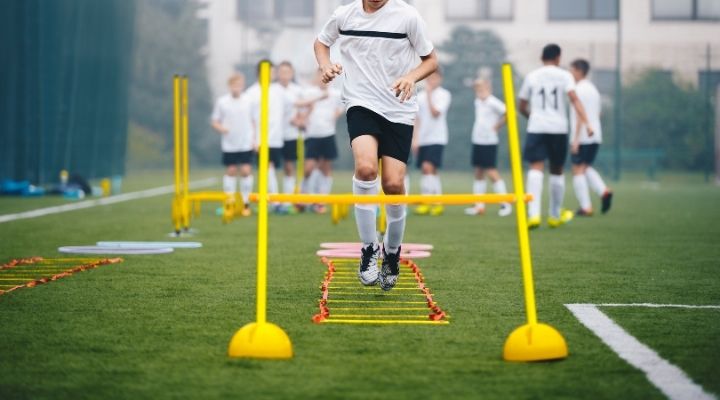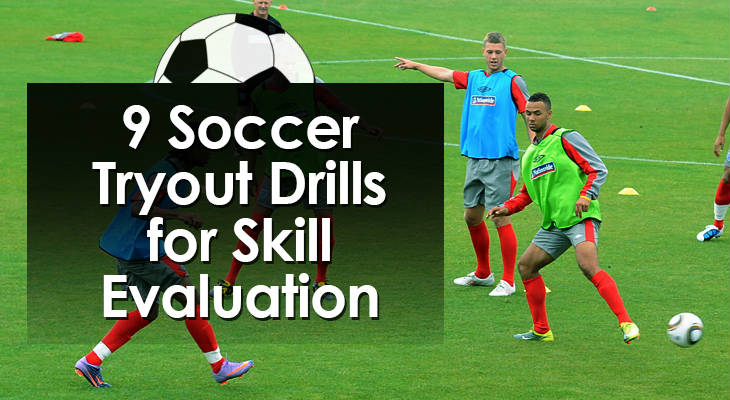12 Soccer Ladder Drills to Improve Agility (2024 Update)
If you want to become a better soccer player, one of the most important things to master is your footwork. Being able to control the ball quickly, change direction in an instant, and keep up with the fast pace of the game all come down to agility, coordination, and speed.
That’s where agility ladder drills come in.
These drills are an easy and fun way to sharpen your skills, and they can be done just about anywhere. All you need is a speed ladder (or even just some cones or tape) and enough space to move. Whether you’re working solo or training with a team, agility ladder drills are perfect for warming up, building coordination, and boosting your performance.
Before diving into the drills, let’s take a quick look at the benefits.

Benefits of Agility Ladder Drills
Training with an agility ladder does more than just increase your foot speed. It also improves:
- Coordination – Better timing between your feet, arms, and body movement
- Balance – Helps you stay upright and controlled, especially when changing direction
- Agility – Allows you to move quicker, make faster cuts, and reposition efficiently
- Quickness – Boosts your reaction time and first-step speed
- Foot control – Gives you more precision when dribbling or reacting to plays
No ladder? No problem. You can always use cones or even draw rungs with chalk. You can also practice footwork patterns without any equipment at all.
12 Soccer Ladder Drills to Boost Your Game
These drills range from beginner-friendly to more advanced, and many can be adjusted based on your skill level. Start slow, master the movement, then increase your speed over time. Remember to stay light on your feet, pump your arms for balance, and keep your eyes up.
1. One Step
A perfect warm-up drill.
- Step one foot in each rung, alternating left and right.
- Stay light and keep your steps short.
- Focus on clean foot placement and form before speeding up.
2. Two Step
A basic drill to build rhythm and coordination.
- Place both feet in each rung, one after the other (right-left, right-left).
- Move quickly but stay under control.
- Arms should move in sync with the legs.
3. Side Steps
Great for improving lateral movement.
- Face sideways to the ladder.
- Step both feet in each rung, then advance to the next.
- Make sure to go in both directions to balance both legs.
4. One Foot Hop
Focuses on balance and strength.
- Hop through the ladder on one foot.
- Land in each rung with control.
- Once complete, return on the opposite foot.
Advanced version: try lateral one-foot hops.
5. Jumping Jacks
Great for rhythm, balance, and coordination.
- Jump both feet into a rung.
- Jump forward, landing with both feet outside the next rung.
- Continue alternating in-in, out-out as you progress.
- Raise your arms like traditional jumping jacks.
6. The Icky Shuffle
A more complex drill that builds quick feet and timing.
- Start to the side of the ladder.
- Step in with your inside foot, then the outside foot.
- Quickly place your inside foot outside the ladder.
- Repeat the pattern moving diagonally forward through the ladder.
Take it slow at first. Once you’ve got the rhythm, speed it up.
7. Backwards Icky Shuffle
Perfect for defensive movement.
- Perform the same pattern as the Icky Shuffle but in reverse.
- Emphasizes backpedaling and maintaining balance while moving backward.
- Great for defenders who need to track opponents or reposition.
8. Single Leg Shuffle
Sharpens speed, timing, and foot precision.
- Start on one side of the ladder.
- Tap your inside foot in and out of each rung.
- Your outside foot moves straight along the side of the ladder.
- Once done, switch legs.
9. Lateral In and Out

Improves coordination and lateral quickness.
- Face the ladder sideways.
- Step both feet in a rung (in-in), then out (out-out).
- Move down the ladder with quick, small steps.
10. Crossover
Enhances hip mobility and directional control.
- Stand sideways to the ladder.
- Cross your lead foot over the back foot into the rung.
- Follow with your trail foot, then continue the movement down the ladder.
11. Footwork & Skill Combo
Mixes in soccer ball control.
- Perform any ladder pattern.
- At the end, immediately dribble or pass the ball.
- Builds real-game transitions from footwork to ball handling.
12. Double Ladder Relay
Great for team training or friendly competition.
- Set up two ladders side-by-side.
- Two players race through their ladders at the same time.
- Adds pressure and fun to footwork drills.
Pro Tips for Ladder Training

- Keep your head up. Don’t stare at your feet.
- Stay light and bounce on the balls of your feet.
- Coordinate your arm swings with foot movement.
- Start slow, then build speed.
- Mix up drills each session to keep things fresh.
FAQs
Q: How often should I do agility ladder drills?
A: 2 to 3 times per week is ideal. Just 15-20 minutes per session can bring results.
Q: Can beginners do these drills?
A: Absolutely. Start with basic drills like One Step and Two Step, then gradually try more complex patterns.
Q: Do I need an actual ladder?
A: No. You can tape lines on the ground, use chalk, or even imagine the spaces. Footwork is what matters.
Q: Will these drills help with my ball control?
A: Yes, especially when you pair footwork with dribbling and passing. Quick feet mean quicker reactions with the ball.
Conclusion
Agility ladder drills are a fantastic way to boost your soccer skills. They’re simple, effective, and can be done anywhere. By working on your foot speed, coordination, and balance, you’ll become a more confident, responsive, and agile player.
Use these 12 drills to build your own weekly routine, or mix them into your team’s warm-up sessions. Over time, the improvements will show up in every aspect of your game.




